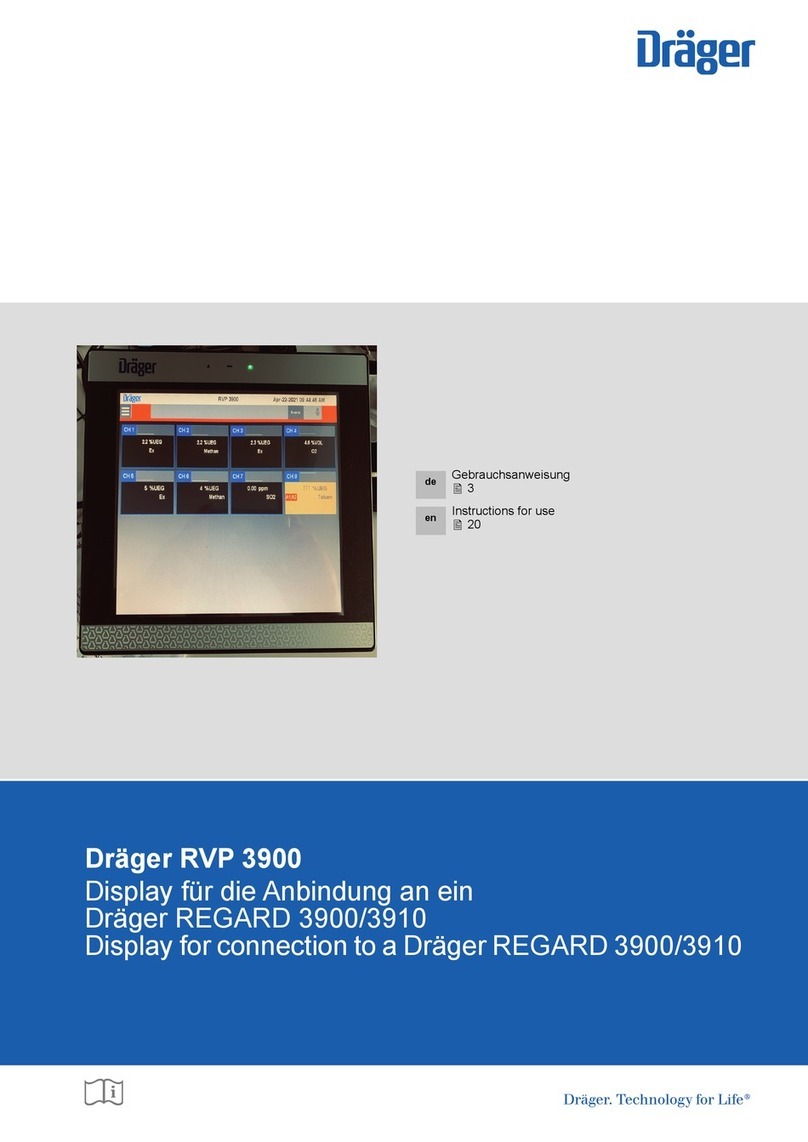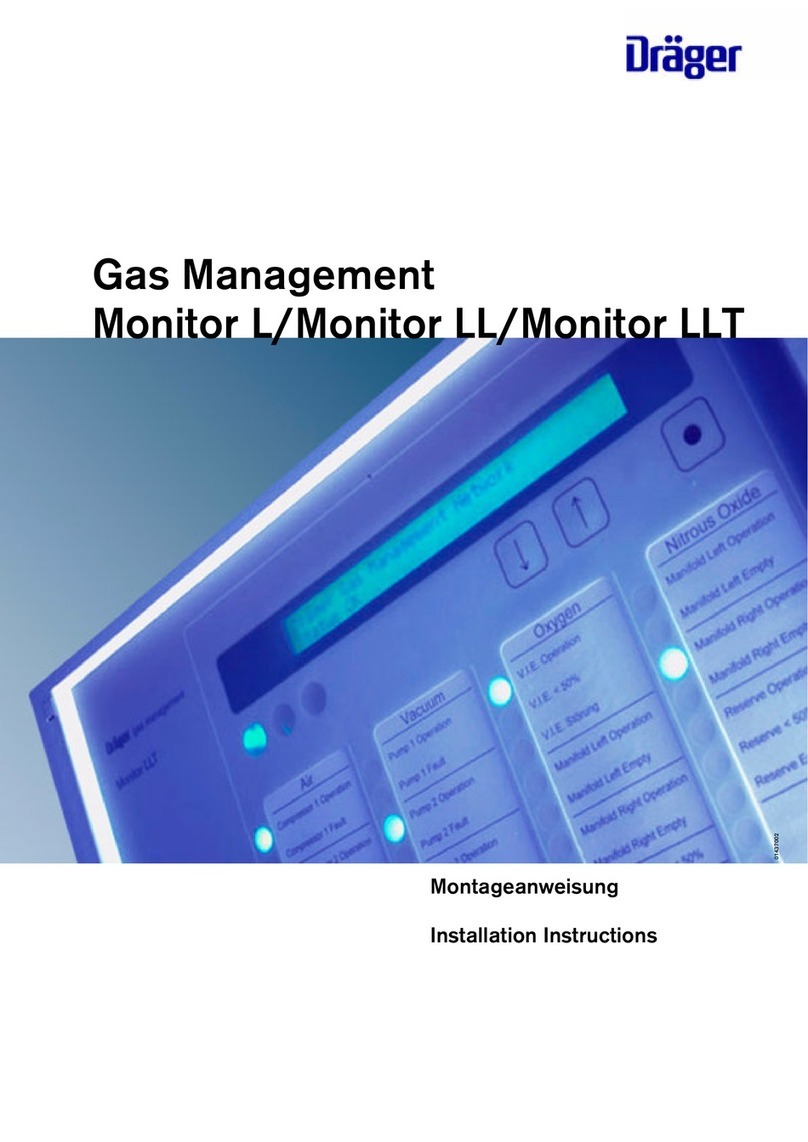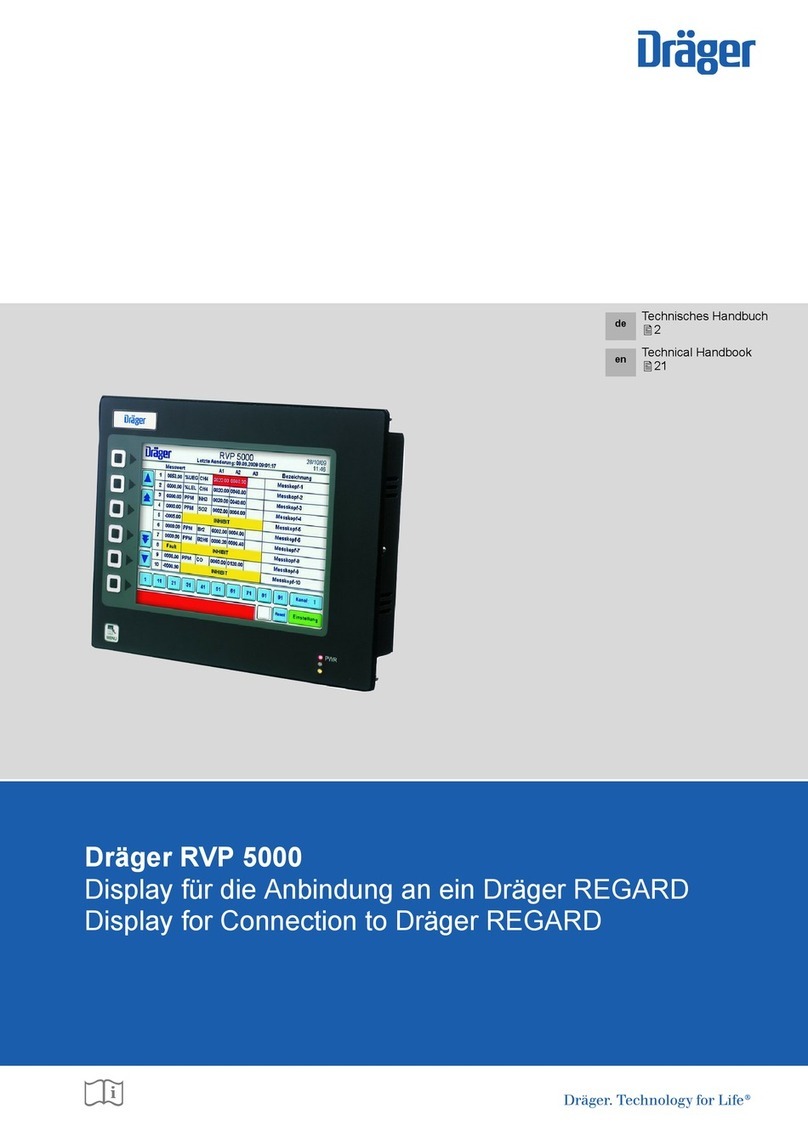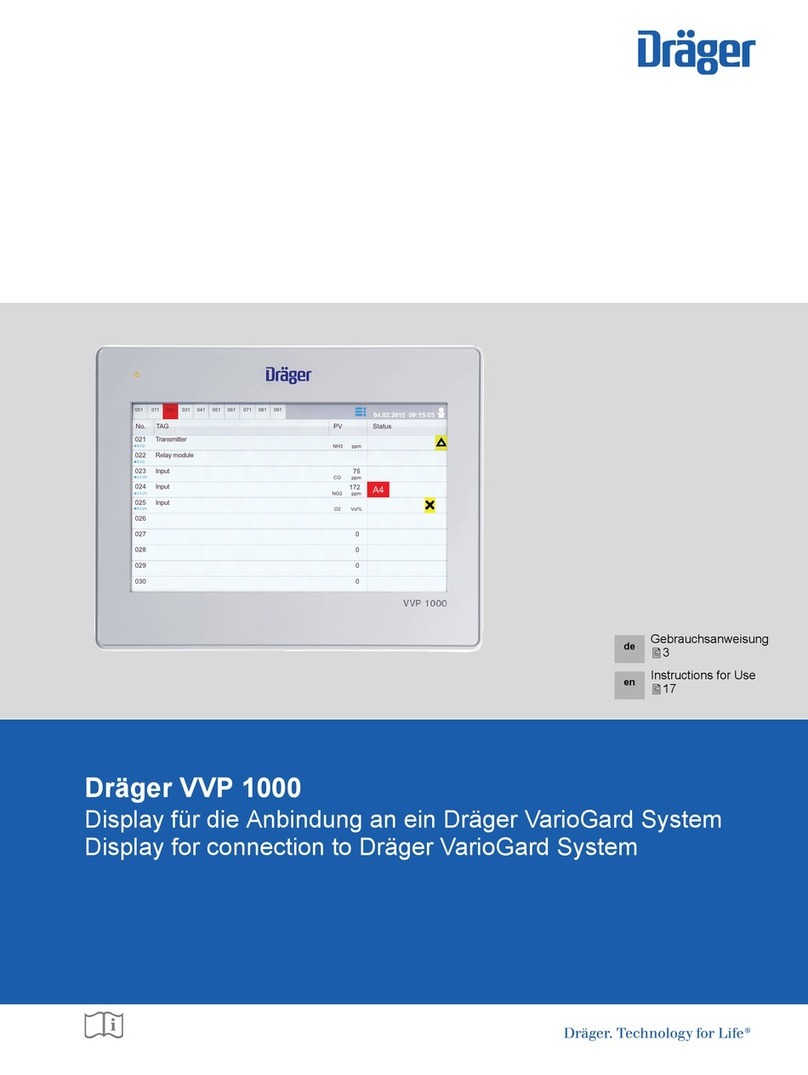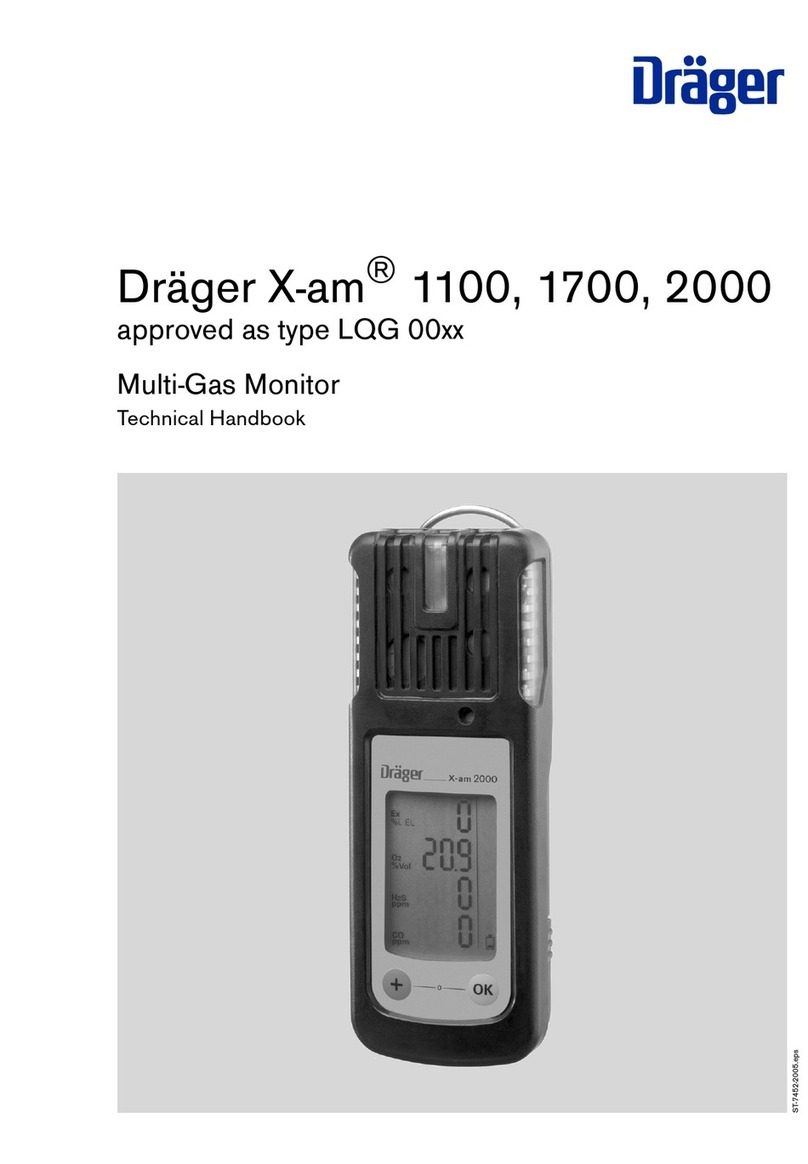
Contents
3
Operating Instructions Vamos, 1. US ed.
Contents
Contents
. . . . . . . . . . . . . . . . . . . . . . . . . . . . . . . . . . . . . . . . . . 3
Important Safety Information
. . . . . . . . . . . . . . . . . . . . . . . . 4
Operator's Responsibility for Patient Safety . . . . . . . . . . . . . 4
Limitation of Liability . . . . . . . . . . . . . . . . . . . . . . . . . . . . . . . . . 4
Warranty . . . . . . . . . . . . . . . . . . . . . . . . . . . . . . . . . . . . . . . . . . . 5
Definitions . . . . . . . . . . . . . . . . . . . . . . . . . . . . . . . . . . . . . . . . . 6
Summary of WARNIN S and CAUTIONS . . . . . . . . . . . . . . 7
Intended Use
. . . . . . . . . . . . . . . . . . . . . . . . . . . . . . . . . . . . . 10
Vamos – Variable Anesthetic as Monitor . . . . . . . . . . . . . 10
Operating Concept
. . . . . . . . . . . . . . . . . . . . . . . . . . . . . . . . 11
Central Control Knob . . . . . . . . . . . . . . . . . . . . . . . . . . . . . . . 11
Structure of the Measurement Display . . . . . . . . . . . . . . . . 12
Monitoring . . . . . . . . . . . . . . . . . . . . . . . . . . . . . . . . . . . . . . . . 12
Preparation
. . . . . . . . . . . . . . . . . . . . . . . . . . . . . . . . . . . . . . . 13
Positioning . . . . . . . . . . . . . . . . . . . . . . . . . . . . . . . . . . . . . . . . 13
Connecting the Power Supply . . . . . . . . . . . . . . . . . . . . . . . 13
Installing the Water Trap . . . . . . . . . . . . . . . . . . . . . . . . . . . . 14
Connecting the Sample Line . . . . . . . . . . . . . . . . . . . . . . . . 15
Sample as Scavenging . . . . . . . . . . . . . . . . . . . . . . . . . . . . 15
Connecting the SpO
2
Sensor . . . . . . . . . . . . . . . . . . . . . . . 16
Operation in Measurement Mode
. . . . . . . . . . . . . . . . . . . 18
Switching On . . . . . . . . . . . . . . . . . . . . . . . . . . . . . . . . . . . . . . 18
SpO
2
Measurement . . . . . . . . . . . . . . . . . . . . . . . . . . . . . . . . 21
Applying the Durasensor DS-100A . . . . . . . . . . . . . . . . . . . 22
Applying the Oxisensor D-25 and D-20 (Option) . . . . . . . . 22
Applying the Oxisensor I-20 (Option) . . . . . . . . . . . . . . . . . . 23
Setting Alarm Limits . . . . . . . . . . . . . . . . . . . . . . . . . . . . . . . . 25
Selecting CO
2
Unit of Measurement/CO
2
Scale . . . . . . . 26
Selecting Other SpO
2
Averaging Intervals . . . . . . . . . . . . . 27
Setting the Volume of the Pulse Tone/Alarm Tone . . . . . . 27
Configure Display Brightness and MEDIBUS Baud Rate 28
Selecting parameters to measure . . . . . . . . . . . . . . . . . . . . 29
Calibration . . . . . . . . . . . . . . . . . . . . . . . . . . . . . . . . . . . . . . . . 29
In the Event of an Alarm . . . . . . . . . . . . . . . . . . . . . . . . . . . . . 30
Replacing/Emptying the WaterLock
®
Water Trap . . . . . . 31
Terminating Operation . . . . . . . . . . . . . . . . . . . . . . . . . . . . . . 32
Enabling Anesthetic Agent Measurement
(Release Mode) . . . . . . . . . . . . . . . . . . . . . . . . . . . . . . . . . . . . 33
Care
. . . . . . . . . . . . . . . . . . . . . . . . . . . . . . . . . . . . . . . . . . . . . 34
Dismantling . . . . . . . . . . . . . . . . . . . . . . . . . . . . . . . . . . . . . . . 34
Replacing/Emptying the WaterLock Water Trap . . . . . . . . 34
Disinfecting/Cleaning/Sterilizing . . . . . . . . . . . . . . . . . . . . 36
Maintenance
. . . . . . . . . . . . . . . . . . . . . . . . . . . . . . . . . . . . 37
Maintenance Intervals . . . . . . . . . . . . . . . . . . . . . . . . . . . . . . . 37
Disposal Procedures . . . . . . . . . . . . . . . . . . . . . . . . . . . . . . . 38
Troubleshooting
. . . . . . . . . . . . . . . . . . . . . . . . . . . . . . . . . . . 39
What's What
. . . . . . . . . . . . . . . . . . . . . . . . . . . . . . . . . . . . . . 41
Front View . . . . . . . . . . . . . . . . . . . . . . . . . . . . . . . . . . . . . . . . 41
Rear View . . . . . . . . . . . . . . . . . . . . . . . . . . . . . . . . . . . . . . . . . 41
Labels . . . . . . . . . . . . . . . . . . . . . . . . . . . . . . . . . . . . . . . . . . . . 42
Technical Data
. . . . . . . . . . . . . . . . . . . . . . . . . . . . . . . . . . . . 44
Environmental Conditions . . . . . . . . . . . . . . . . . . . . . . . . . . . 44
Performance Characteristics . . . . . . . . . . . . . . . . . . . . . . . . . 44
Operating Characteristics . . . . . . . . . . . . . . . . . . . . . . . . . . . 45
Interfaces . . . . . . . . . . . . . . . . . . . . . . . . . . . . . . . . . . . . . . . . . 46
Classifications . . . . . . . . . . . . . . . . . . . . . . . . . . . . . . . . . . . . . 46
Theory of Operation
. . . . . . . . . . . . . . . . . . . . . . . . . . . . . . . 47
Measuring CO
2
and Volatile Anesthetics . . . . . . . . . . . . . . 47
Measuring SpO
2
. . . . . . . . . . . . . . . . . . . . . . . . . . . . . . . . . . 47
Accuracy Limitations . . . . . . . . . . . . . . . . . . . . . . . . . . . . . . . . 47
bbreviations and Symbols
. . . . . . . . . . . . . . . . . . . . . . . . . 48
Ordering Information
. . . . . . . . . . . . . . . . . . . . . . . . . . . . . . 49
Index
. . . . . . . . . . . . . . . . . . . . . . . . . . . . . . . . . . . . . . . . . . . . . 50
RETURN TO THIS MANUAL'S TABLE OF CONTENTS
RETURN TO CD-ROM TABLE OF CONTENTS


